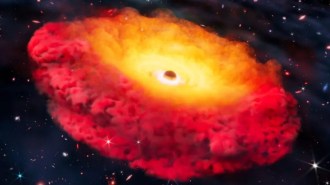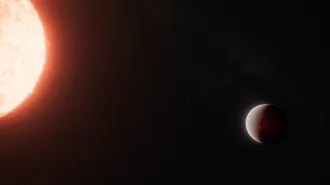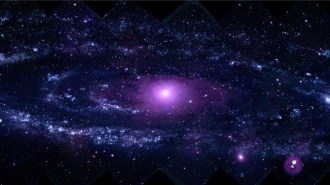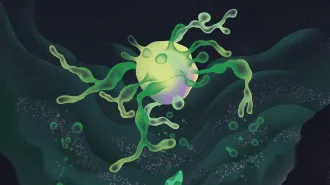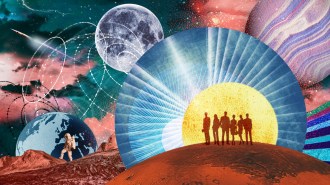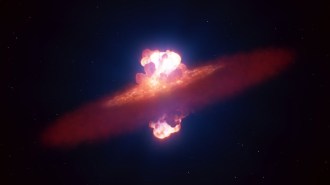An invisible, highly energetic flash detected by a spacecraft early this week may have given astronomers their first glimpse of two neutron stars crashing together, forging a black hole at a galaxy’s edge.
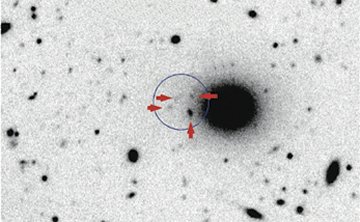
NASA’s Swift satellite detected the flash—a burst of gamma rays that lasted one-twentieth of a second—on May 9. Fifty-three seconds later, the craft slewed its X-ray telescope toward the same spot in the sky, fast enough to catch a rapidly fading afterglow. The X-ray detection marks the first time that astronomers have identified the location of a short-duration gamma-ray burst, which lasts less than 2 seconds, says Swift project scientist Neil Gehrels of NASA’s Goddard Space Flight Center in Greenbelt, Md.
Astronomers worldwide raced to find the galaxy from which the burst emanated as well as a possible visible-light afterglow of the cataclysmic event. With Swift’s X-ray data as guidance and using two telescopes in Arizona, the WIYN Telescope on Kitt Peak and the PAIRITEL on Mount Hopkins, Josh Bloom of the University of California, Berkeley and his colleagues found an elliptical galaxy, devoid of new stars, that lies about 2.7 billon light-years from Earth. The X-ray afterglow appears to coincide with the outskirts of this galaxy. Researchers haven’t come to a consensus about whether this burst generated a visible-light afterglow.
The characteristics of the burst, along with the discovery of the elliptical galaxy, suggest that the flash was generated by the collision of two extremely compact objects—either a pair of neutron stars or a neutron star coalescing with an even more-compact body, a black hole. The dense cinder of an exploded massive star, a neutron star packs as much material as the sun into a sphere 20 kilometers in diameter.
Theorists proposed nearly 20 years ago that the collision of two neutron stars produces a variety of gamma-ray bursts, but the collisions are now believed to generate only shorter-lived bursts. These account for about one-third of all bursts.
Simulations suggest that the merger of two neutron stars generates an extremely energetic, short-lived blast of gamma rays, with little if any visible-light emission—just as the May 9 burst, which is now dubbed GRB 050509b, did. Another feature of the finding suggests coalescing neutron stars. In the billion years that it takes a pair of neutron stars to spiral together, they can migrate far from a star-birthing region, including a place like the outskirts of an elderly elliptical galaxy.
In contrast, long-lived gamma-ray bursts—which last for more than 2 seconds—are probably generated during massive supernova explosions, which typically occur in star-birthing regions. The afterglows of long-duration bursts can last for days and include visible light.
“It has long been suspected that short-lived gamma-ray bursts are a very different beast [than the longer-lived ones], but now there’s no question,” says Shri Kulkarni of the California Institute of Technology in Pasadena.
He cautions that it’s uncertain whether the observed elliptical galaxy is the host of GRB 050509b. Using the Keck Observatory on Mauna Kea in Hawaii, his team has found several other candidate sources for the burst.
The Hubble Space Telescope will soon scan the region. At press time, the Chandra X-ray Observatory had also been slated to take a look.
“We’re using all our premiere telescopes to shed any light that we can” on the burst, says Kulkarni.
